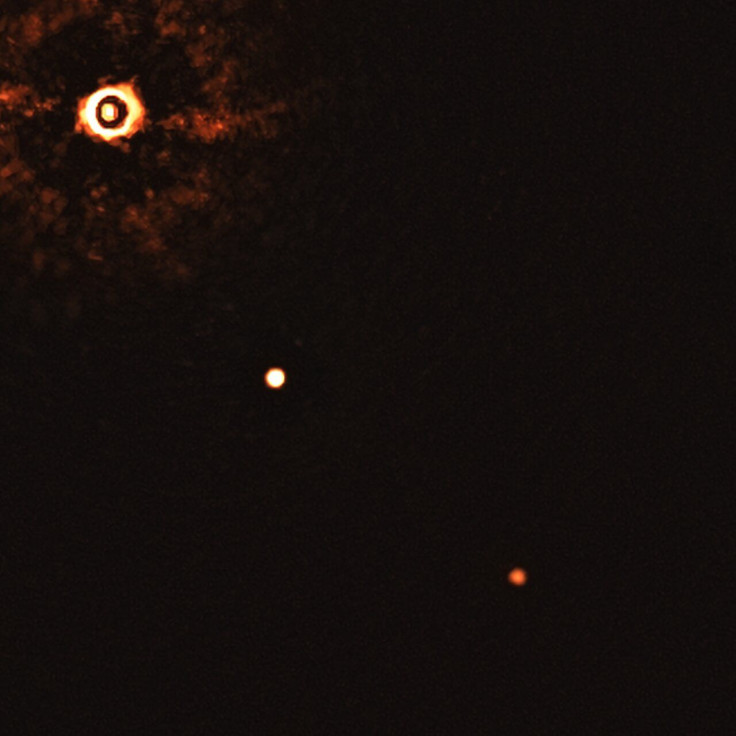Astronomers Capture First Direct Image Of Multiplanet System Around Sun-Like Star
KEY POINTS
- Astronomers took the first direct image of a multiplanet system orbiting a Sun-like star
- Both of the planets in the system are several times bigger in mass than Jupiter
- Further observations of the system can help astronomers understand our own solar system
For the first time, astronomers directly imaged a Sun-like star with two giant exoplanet companions. The image could help astronomers understand the history of our own solar system.
Thousands of exoplanets in the galaxy have been observed by astronomers through indirect methods but, only a handful have been detected through direct imaging. Even among those that have been directly imaged in the past decades, only a small number of these have been confirmed to be multiplanet systems, or ones where more than one planet is orbiting the star. In fact, only two multiplanet systems have been directly observed so far and they are orbiting stars that are very different from the Sun.
Now, the researchers of a new study are reporting the first ever direct image of a Sun-like star with two giant exoplanet companions. Until the new image, astronomers had not been able to directly image more than one planet orbiting a Sun-like star.
In the image that was taken using the European Southern Observatory's (ESO) Very Large Telescope (VLT), the star called TYC 8998-760-1 can be seen at the top left corner, while its two planet companions can be seen at the center and the bottom right.

The two exoplanets are said to be about 14 and six times the mass of Jupiter and, orbit the star at a distance of 160 and 320 times the distance of the Earth from the Sun. This means that the gas giants are significantly farther away from their host star even when compared to Jupiter and Saturn, the planets in our solar system that are farthest from the Sun.
"This discovery is a snapshot of an environment that is very similar to our Solar System, but at a much earlier stage of its evolution," study lead Alexander Bohn of Leiden University said in a news release. As such, seeing a system similar to ours in its early stages can provide clues as to how our own solar system evolved.
5/ The new ESO’s VLT image is the first direct image of more than one exoplanet around a Sun-like star. https://t.co/3zdTFQBcTz
— ESO (@ESO) July 22, 2020
So far, there are many more questions that remain about the planetary system. For instance, it is unclear whether the planets were formed where they are or, if they were formed somewhere else and eventually moved to their current location. There is also the possibility that the system has rocky planets in orbit.
To find out, further observations of the system have to be made using future powerful telescopes such as the ESO's Extremely Large Telescope (ELT) or the James Webb Space Telescope.
"The possibility that future instruments, such as those available on the ELT, will be able to detect even lower-mass planets around this star marks an important milestone in understanding multi-planet systems, with potential implications for the history of our own Solar System," Bohn said.
The study is published in The Astrophysical Journal Letters.
© Copyright IBTimes 2024. All rights reserved.






















